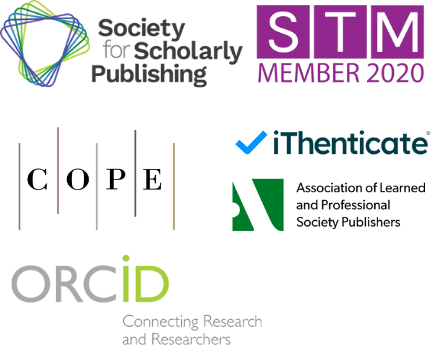A Dynamic Multi-Factor Portfolio Strategy Utilizing Ensemble Decision Trees
DOI:
https://doi.org/10.71222/05egm229Keywords:
multi-factor model, portfolio strategy, ensemble learning, decision trees, LightGBM, quantitative investment, asset pricingAbstract
Traditional linear multi-factor models often fail to capture the complex, non-linear dynamics inherent in modern financial markets. To address this limitation, this paper proposes an Ensemble-based Dynamic Multi-factor (EDMF) framework for constructing robust investment portfolio strategies. Using Chinese A-share market data from 2021 to 2023, encompassing 2,893 stocks and 101 alpha factors, a sophisticated data preprocessing pipeline is implemented, including LSTM-based imputation and dynamic Winsorization. The core of the EDMF framework features a gradient boosting-based feature engineering engine and an Attention-LSTM module, which dynamically adjusts factor weights according to prevailing market conditions. The model employs an incremental learning strategy, updating parameters every 30 trading days to adapt to structural market shifts. Experimental results on the 2023 test set demonstrate the superiority of the proposed approach. The LightGBM-based model achieved a mean Information Coefficient (IC) of 0.153, an annualized return of 31.4%, and a Sharpe ratio of 2.08, significantly outperforming other ensemble models such as XGBoost and traditional linear models. These findings validate the effectiveness of applying advanced machine learning techniques to develop adaptive and highly profitable quantitative investment strategies.
References
1. A. Abedinia, and V. Seydi, "Building semi-supervised decision trees with semi-cart algorithm," International Journal of Machine Learning and Cybernetics, vol. 15, no. 10, pp. 4493-4510, 2024.
2. H. Pan, and M. Long, "Intelligent portfolio theory and application in stock investment with multi-factor models and trend following trading strategies," Procedia Computer Science, vol. 187, pp. 414-419, 2021. doi: 10.1016/j.procs.2021.04.116
3. K. C. Cheng, M. J. Huang, C. K. Fu, K. H. Wang, H. M. Wang, and L. H. Lin, "Establishing a multiple-criteria decision-making model for stock investment decisions using data mining techniques," Sustainability, vol. 13, no. 6, p. 3100, 2021.
4. J. S. Chou, and K. E. Chen, "Optimizing investment portfolios with a sequential ensemble of decision tree-based models and the FBI algorithm for efficient financial analysis," Applied Soft Computing, vol. 158, p. 111550, 2024.
5. F. Dakalbab, M. A. Talib, Q. Nasir, and T. Saroufil, "Artificial intelligence techniques in financial trading: A systematic liter-ature review," Journal of King Saud University-Computer and Information Sciences, vol. 36, no. 3, p. 102015, 2024. doi: 10.1016/j.jksuci.2024.102015.
6. X. Luo, "Reshaping coordination efficiency in the textile supply chain through intelligent scheduling technologies," Economics and Management Innovation, vol. 2, no. 4, pp. 1–9, 2025, doi: 10.71222/ww35bp29.
7. E. F. Fama, and K. R. French, "Common risk factors in the returns on stocks and bonds," Journal of financial economics, vol. 33, no. 1, pp. 3-56, 1993. doi: 10.1016/0304-405x(93)90023-5.
8. E. F. Fama, and K. R. French, "A five-factor asset pricing model," Journal of financial economics, vol. 116, no. 1, pp. 1-22, 2015. doi: 10.1016/j.jfineco.2014.10.010.
9. E. M. Ferrouhi, and I. Bouabdallaoui, "A comparative study of ensemble learning algorithms for high-frequency trading," Scientific African, vol. 24, p. e02161, 2024. doi: 10.1016/j.sciaf.2024.e02161.
10. L. Yun, "Analyzing credit risk management in the digital age: Challenges and solutions," Economics and Management Innova-tion, vol. 2, no. 2, pp. 81–92, 2025, doi: 10.71222/ps8sw070.
11. B. Gao, Q. Zhou, and Y. Deng, "HIE-EDT: Hierarchical interval estimation-based evidential decision tree," Pattern Recognition, vol. 146, p. 110040, 2024. doi: 10.1016/j.patcog.2023.110040.
12. T. Lim, "Environmental, social, and governance (ESG) and artificial intelligence in finance: State-of-the-art and research takeaways," Artificial Intelligence Review, vol. 57, no. 4, p. 76, 2024. doi: 10.1007/s10462-024-10708-3.
13. C. Liu, J. Lai, B. Lin, and D. Miao, "An improved ID3 algorithm based on variable precision neighborhood rough sets," Applied Intelligence, vol. 53, no. 20, pp. 23641-23654, 2023. doi: 10.1007/s10489-023-04779-y.
14. S. Pang, M. Wei, J. Yuan, B. Zhu, and Z. Wen, "WT combined early warning model and applications for loaning platform customers default prediction in smart city," Journal of Ambient Intelligence and Humanized Computing, vol. 14, no. 3, pp. 1419-1430, 2023.
15. C. Xue, "Mirkin et al," Angew. Chem. Int. Ed, vol. 46, pp. 2036-2038, 2007.
16. Y. Xu, Y. Cuijuan, P. Shaoliang, and N. Yusuke, "A hybrid two-stage financial stock forecasting algorithm based on clustering and ensemble learning," Applied Intelligence, vol. 50, no. 11, pp. 3852-3867, 2020.
17. L. Leroyer, V. Maraval, and R. Chauvin, "Synthesis of the butatriene C4 function: methodology and applications," Chemical Reviews, vol. 112, no. 3, pp. 1310-1343, 2012.
Downloads
Published
Issue
Section
License
Copyright (c) 2025 Qianli Ma (Author)

This work is licensed under a Creative Commons Attribution 4.0 International License.


